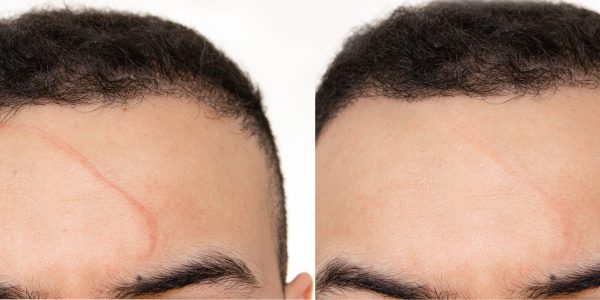Facial Scars

Consultation
The initial step in addressing facial scars typically involves a comprehensive consultation. During this consultation, a thorough assessment of the patient’s skin condition is conducted, evaluating the type and severity of facial scars. Additionally, the patient’s expectations and goals are discussed to tailor a treatment plan accordingly.
Pre-Treatment Preparation
Prior to the procedure, patients may receive guidance to minimise potential post-treatment complications. Recommendations may include avoiding sun exposure and regular use of sunblock. In certain cases, a numbing cream or local anesthesia might be applied to the treatment area to enhance patient comfort during the procedure.
Procedure
Fractional laser resurfacing employs a specialised laser device emitting controlled beams of light. The term “fractional” signifies that the laser targets only a fraction of the skin’s surface at a time.
Micro-injuries are created in the skin, removing small columns of tissue while leaving surrounding areas untouched. This process stimulates the body’s natural healing response, promoting the production of new, healthier skin cells. The depth and intensity of the laser can be adjusted based on the specific needs of the patient.
Collagen Stimulation
A significant advantage of fractional laser resurfacing is its ability to stimulate collagen production. Collagen is a crucial protein that contributes to the skin’s structure and elasticity. The newly generated collagen helps fill in and smooth out facial scars over time.
Recovery
Post-procedure, patients can anticipate some redness, swelling, and a sensation similar to a sunburn. Recovery times may vary, but most individuals can resume normal activities within a week. Adhering strictly to post-treatment care instructions, including the use of prescribed creams and sun avoidance, is vital for optimal results and to minimise the risk of complications.
Results
The complete results of fractional laser resurfacing for facial scars may take several weeks to months to become apparent. Patients often observe improved skin texture, reduced pigmentation, and diminished facial scars as the skin continues to regenerate and heal.
Follow-Up Sessions
Depending on the severity of the facial scarring and the desired outcome, multiple treatment sessions may be recommended for optimal results. These sessions are typically spaced several weeks apart.
